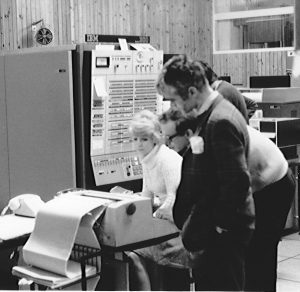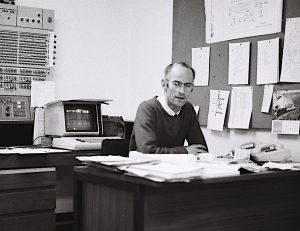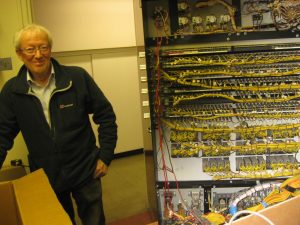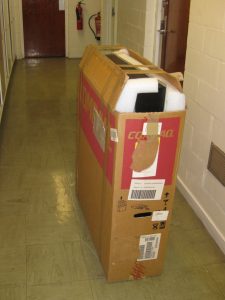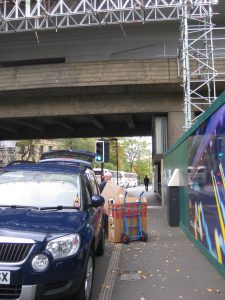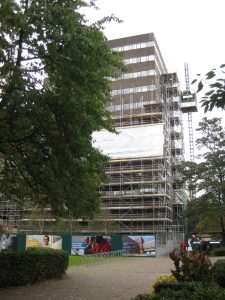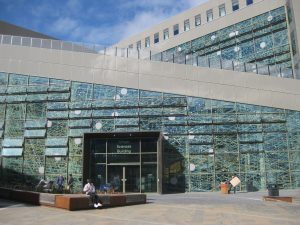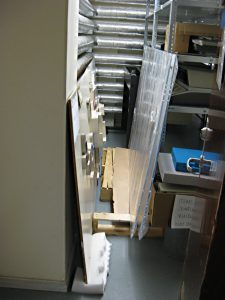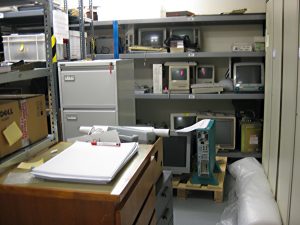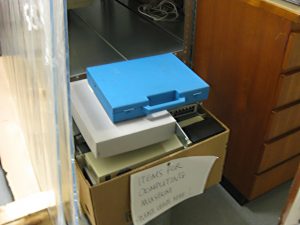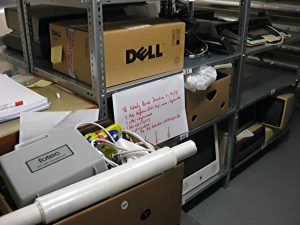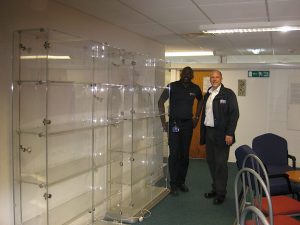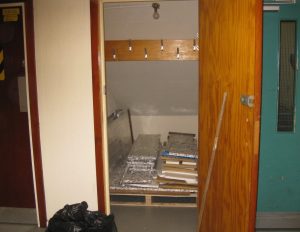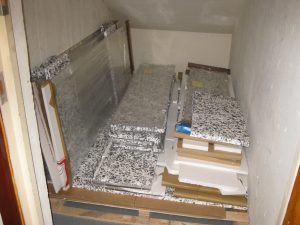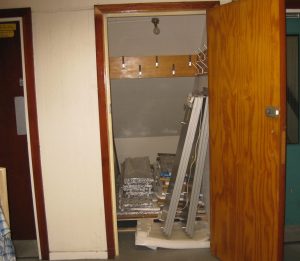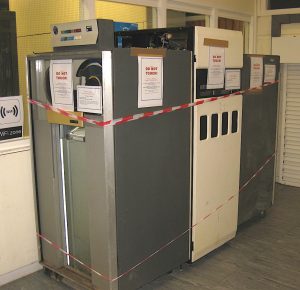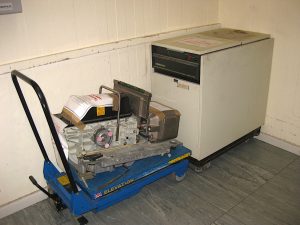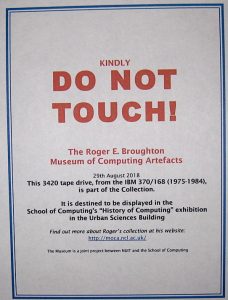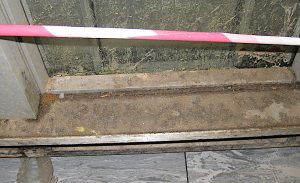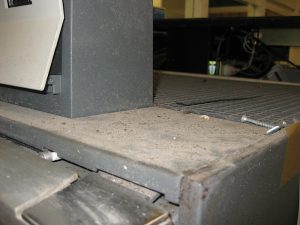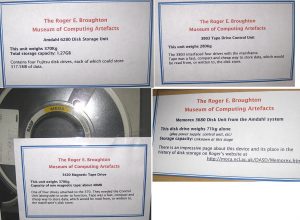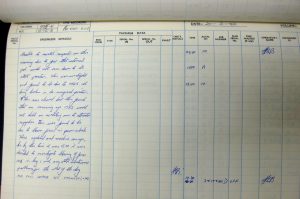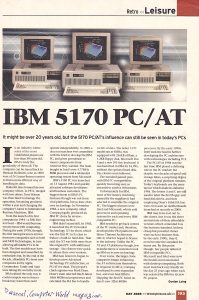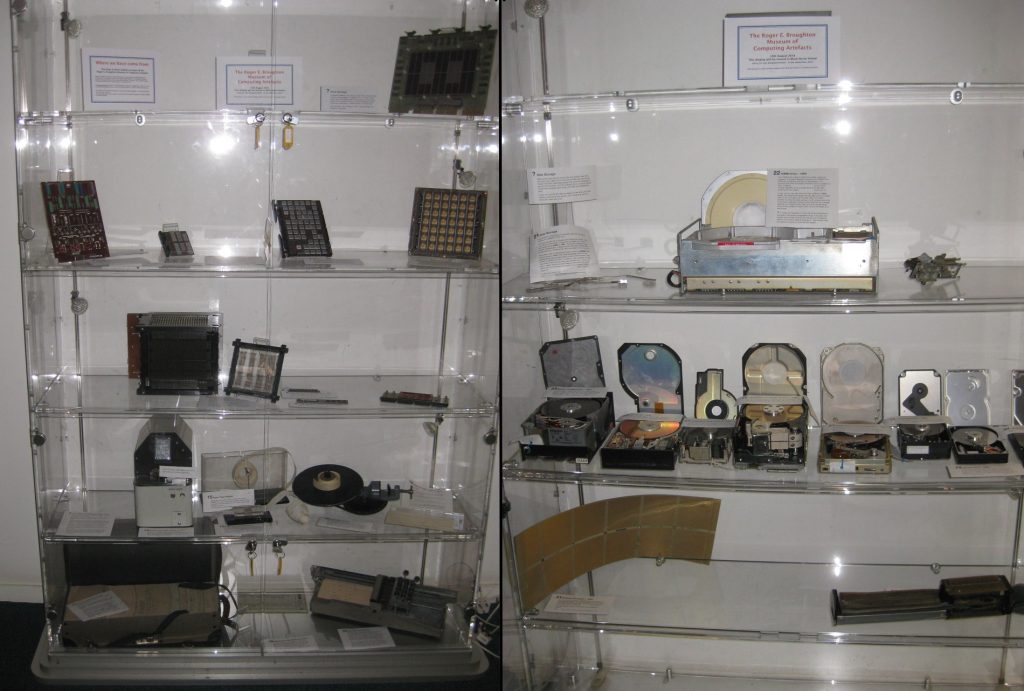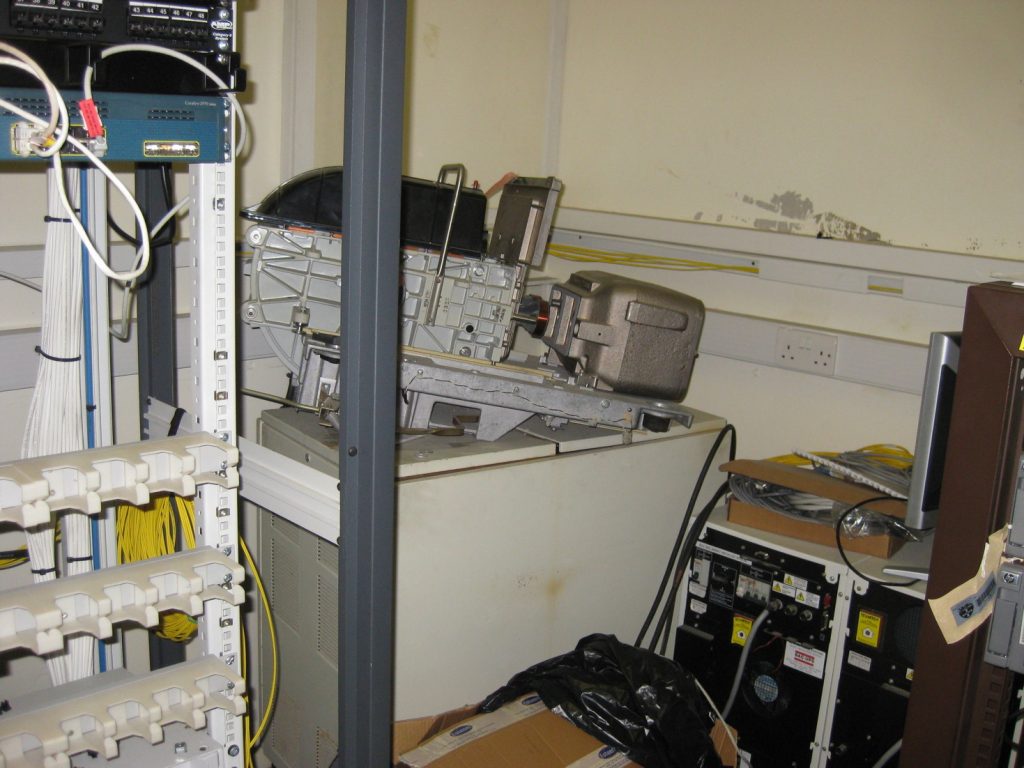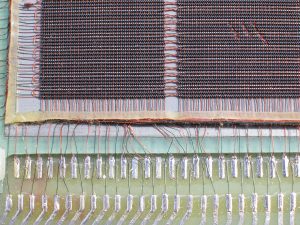Long entry sorry: important to record procedures in case of accident, premature demise, and so on and so forth..
Today I was able to visit the Claremont Tower Repository again for the first time since 5th October (see entry). The Repository is where the Roger Broughton Collection actually lives: it feeds the Computing displays in the Urban Sciences Building.
On Monday I was issued with the correct Personal Protection Equipment by NUIT, and Safety-inducted by SRM (Sir Robert McAlpine), who have an extremely strict safety and security regime. Today I made my first foray alone into the building, and it all worked (entrance is by fingerprint).
I was glad to find that our “territory” was unchanged from when we left on 5th October (not by any means a certainty: I was very relieved). Before going to CT, I had to go to Black Horse House, where NUIT now live, to sign out the key which is needed to enter the specific area where our two offices are: the steel security door now remains locked, since NUIT staff are no longer permanently located in CT.
Changes made: there is no water in the building (this does not mean that there will be no flood! although it does reduce the odds); emergency lighting has been installed all over the lower floors, because they are now one of the builders’ fire exits. This installation has caused muck and dust to be deposited all over the floors. I spent a little time sweeping up, so that your feet don’t crunch wherever you walk. I’m sorry: I forgot to take pictures of this interesting part of a curator’s job.
I checked each of our locations: all seem to be untouched, and our four locked doors were all still locked. I remain nervous: SRM are not going to go below Basement Level, but there is a large air conditioning contract going on in the Sub-Basement, there are signs that Estates keep doing “things” in the Sub-Basement, and in addition yet more contractors will be coming some time in the next few months to upgrade network cabling. In short: I have no jolly idea of what is going on, or is planned to be going on, in these sensitive areas.
Finally: the network in our office has gone off, so we cannot email from there, or back-up the catalogue to central store, etc. I am contacting the relevant people to enquire about this.

